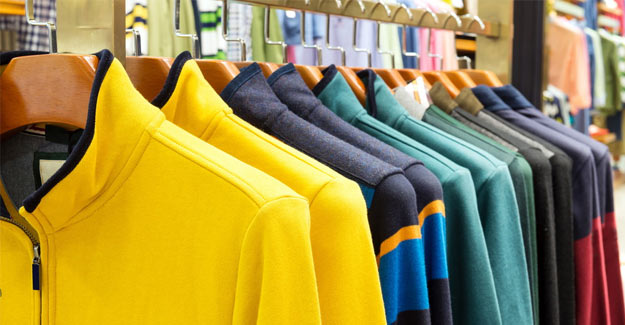
Apparel, Footwear, Fashion
Indian Apparel Market Grows Threefold In Last Decade
- The market for apparel in India grew at a CAGR of 13.8% in FY18, according to a report by CARE ratings.
- Women's wear contributes almost 38%, and is largely dominated by ethnic apparel such as sarees, and suits.
Indians spent Rs 5,408 billion on buying clothes in 2018, a jump from the Rs 1,924 billion they spent in 2010, as higher disposable incomes, greater migration to large cities, and brands opening up in non-metros helped more people access branded clothing.
The market for apparel in India grew at a CAGR of 13.8% in FY18, according to a report on India's apparel market by CARE ratings. CARE used data from CMIE and measured private final consumption expenditure (PFCE) on clothing to map overall expenditure on apparel in India. While men's clothing continues to be the biggest chunk of the local apparel market, at 41%; kidswear that is 21% of the overall market is the fastest growing segment in India.
Women's wear contributes almost 38%, and is largely dominated by ethnic apparel such as sarees, and suits. However, denim is the fastest growing sub-segment for women's wear. "The robust growth in this segment can be attributed to the rising income levels, rising number of working women and more college going females," Saurabh Bhalerao. associate director, industry research, CARE Ratings said in the report.
A shift in the country's demographic - half the country's population is under 25 - and ease in accessing brands is helping consumers buy more clothing. "If you see the overall apparel consuming population in India has gone up in the last decade," said Bhalerao, explaining that a shift in demographics and the number of people residing in urban areas has helped Indian households access more brands.
According to CARE's research, 20% of apparel is still bought in the country's top metros, making the cities of Delhi, Mumbai, Bengaluru, Chennai, etc the largest consumers of apparel in India. "Considering that less than 20% of India's population lives in these cities indicate the higher purchasing power in urban areas and frequency of purchases," the report noted. These markets also have a higher penetration of women's western wear as compared to Tier -I or Tier -II cities of the country.
But a demographic shift has been underway too, CARE's Bhalerao noted. For long, the country's top fashion brands focused on largely catering to shoppers in the country's top metros. However, a proliferation of e-commerce and the popularity of the mall culture in tier 2 cities such as Indore, Surat, and Kochi over the last decade has helped brands cater to these markets. Additionally, more digitally connected shoppers across markets are now aware of the latest fashion trends. "The increasing purchasing capacity and awareness of fashion and trends in small cities has also resulted in providing a huge market to the organised players of the country," the report noted.
Indians however still remain value conscious.
As a result, medium-price apparels hold majority share among the market followed by the economy segment. Here, "the price sensitive rural population forms a major part of the value and economy price segments of apparel market." Further, driven by the twin trends of premiumisation and value consciousness, the mid-market segment is being squeezed on both sides, CARE noted.
This has also prompted the entry of some of the world's largest fashion retailers, as well as has led to an increase in local, home-grown ethnic wear brands such as W, Biba, Manyavar etc. In the last decade, some of the world's top foreign retail brands such as H&M, Zara, Forever 21, have entered India to capitalise on the growing demand for fashion wear. Japan's Uniqlo is set to enter the market later this year. Zara and H&M have already crossed Rs1,000 crore in turnover in India.
Textile Excellence
Previous News
the many benefits of oerlikon neumag bcf s8 for carpet industry
Next News
picanol presents its latest offerings for technical textiles producers









